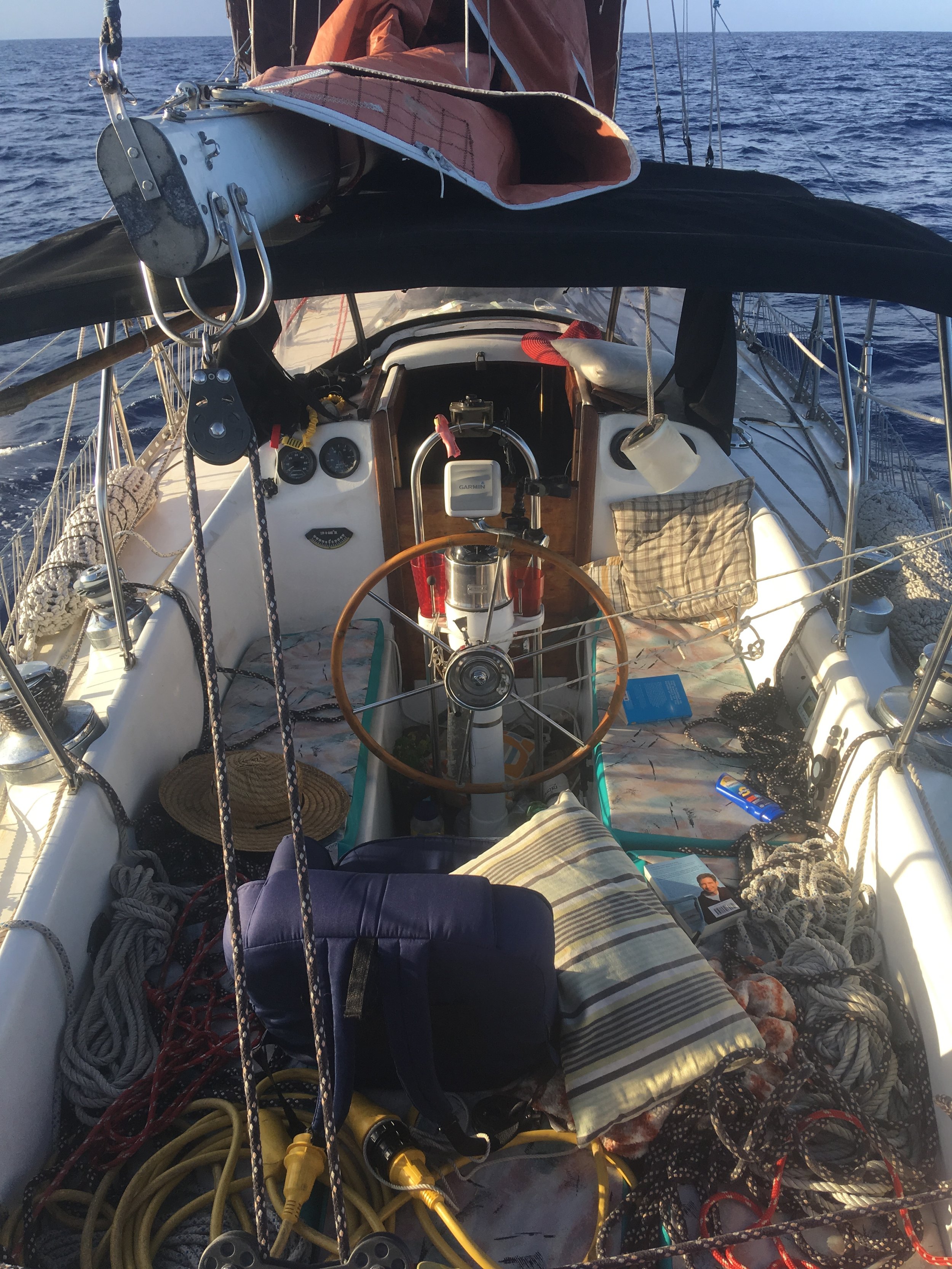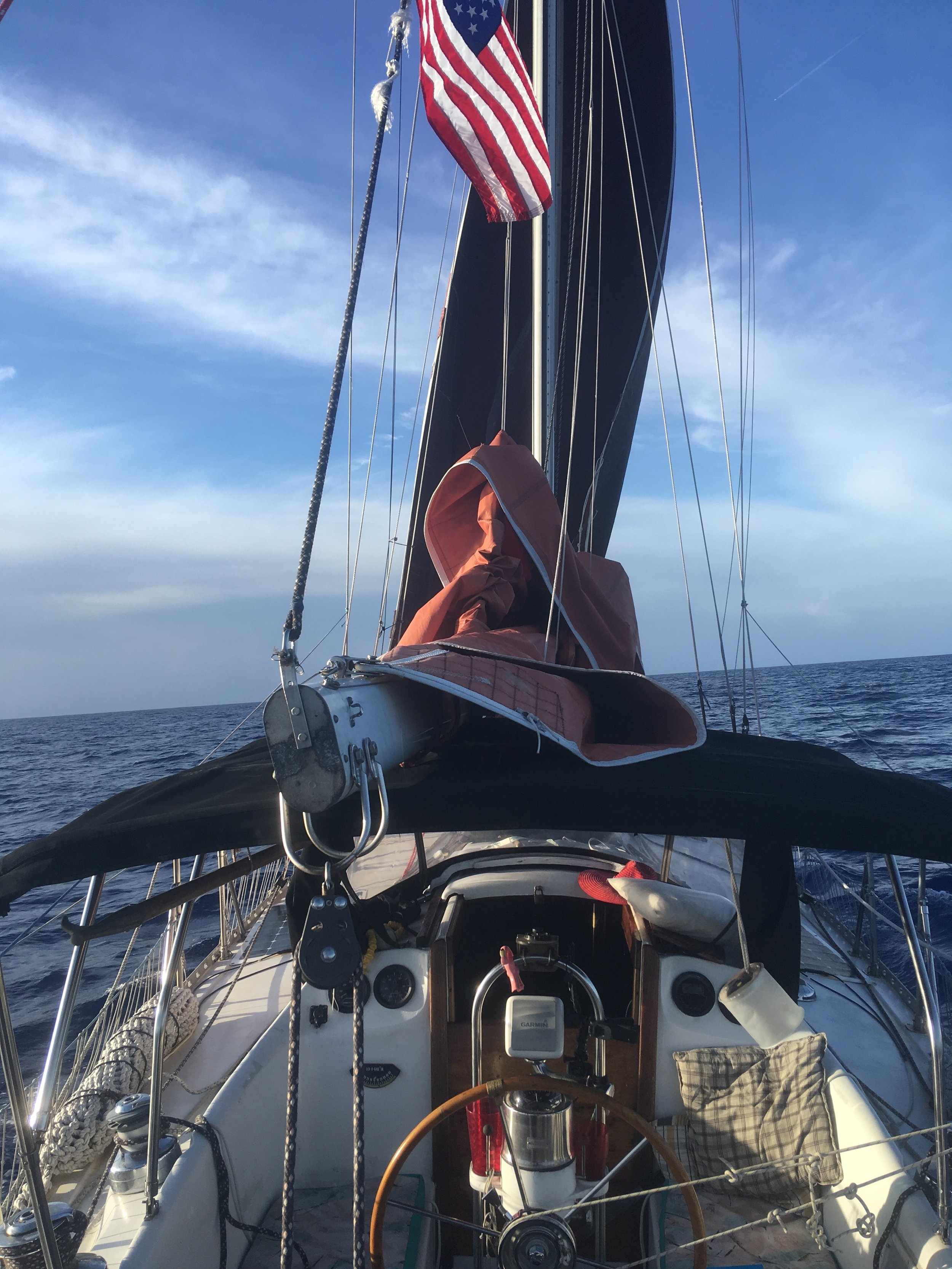We continue to make our way East but we have removed the Northern component of our course. Why? We have enough wind!
The winds in the Westerlies are pretty easy to navigate and sail in because you can choose what kind of winds you want to be having. The further North you go, the stronger the winds will be. The further South you go, the lighter the winds will be. If you feel that the winds are a bit light, simply sail a bit more northerly until the winds build to your liking. If you feel they are a bit too strong, simply head a bit more southerly. When you finally find the winds you like, just head East and the winds will stay constant for you!
While stronger winds do mean larger seas, when they are following seas, they are not so bad!
The waves come at your stern and simply slide under the overhang. The stern lifts and you surf down the wave. As the wave passes the boat, the bow goes up and the boat would normally lose its speed as it tries to climb the back of the wave, but the winds are strong and won’t let you decelerate, powering you along as you ride through the seas.
As night falls, the stars begin to come out. This one star, probably Venus or Jupiter, is already out even before the sun has sunken beneath the horizon. We always reef down in weather like this, not because we want to go slower, but because we don’t want to be reefing in the dark. Should the winds build further, we would be over-canvassed and over-powered, necessitating us to deal with tanbark sails in the dark. Reefing early means that the person on watch simply watches and the person off watch sleeps. Nothing dramatic happens and everyone stays safely well rested.
Thankfully, the Moon is well light in the night as we are making our way towards the Azores. I always prefer to sail at night with a full moon. It makes the mystery of the darkness wash away as your eyes adjust to the small amount of sunlight being reflected back at the surface of the Earth.
It is also very useful to judge the sea state as the moon beam lights up the tops of the waves on its way to your yacht. In your perspective, it might look like a single beam of light leading up to the moon, but everyone has this same perspective as the light from the moon is radiating out evenly in all directions and you are only able to perceive the light that is coming your way; just as someone else can only perceive the light coming their way.
Imagine if we could all see the world from other peoples perspectives? I’m sure there would be a lot less conflict!













